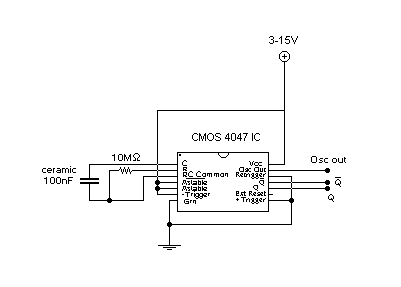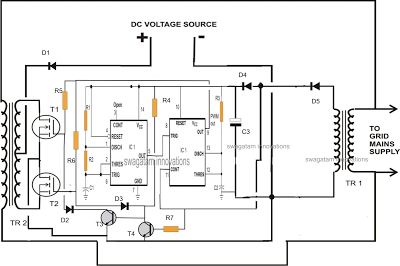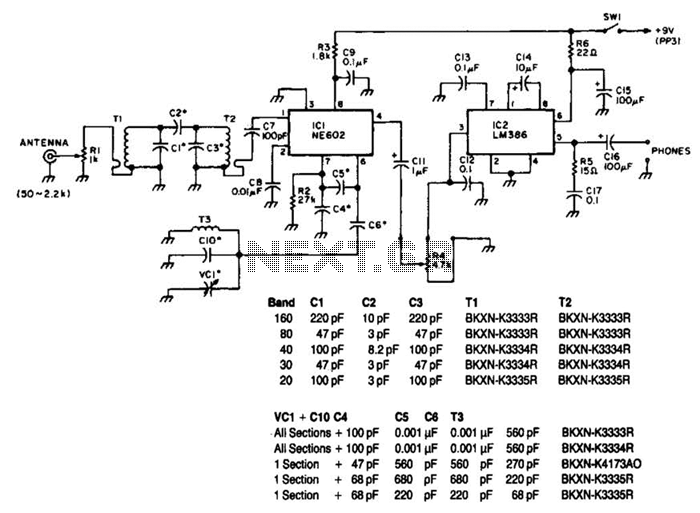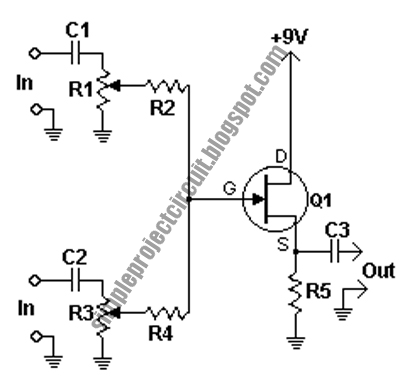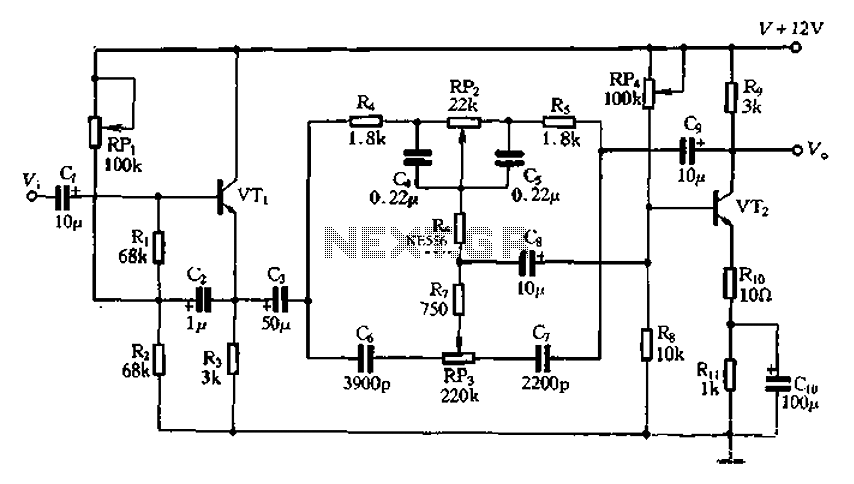
Signal Meter Circuit
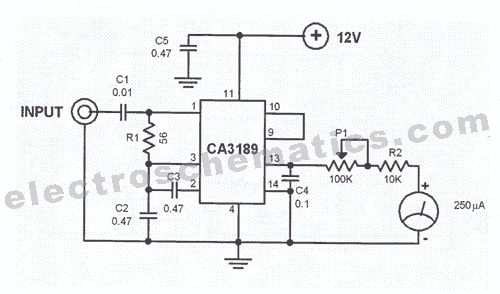
The CA3189 integrated circuit (IC) incorporates a symmetrical limiter, a phase demodulator, an audio amplifier, and a logarithmic detector-amplifier. The logarithmic detector-amplifier is particularly noteworthy for enhancing the logarithmic signal meter of shortwave receivers, thereby improving signal reading accuracy. Constructing the circuit is straightforward, with the requirement that it operates effectively up to 30 MHz. To achieve this, specific guidelines should be followed: connect the input to a 50-ohm line, minimize circuit wiring length, and ensure that the input signal is shielded.
The CA3189 IC is designed for applications requiring precise signal processing, particularly in radio frequency (RF) environments. The symmetrical limiter within the IC serves to prevent signal distortion by clipping the amplitude of incoming signals that exceed a predetermined threshold. This function is crucial in maintaining signal integrity, especially in environments with varying signal strengths.
The phase demodulator included in the CA3189 allows for the extraction of phase information from modulated signals, making it suitable for applications in communication systems where phase modulation is utilized. The audio amplifier component enhances the output signal, providing sufficient gain for further processing or listening applications.
The logarithmic detector-amplifier is a standout feature, enabling the conversion of input signal levels into a logarithmic scale. This characteristic is particularly beneficial in shortwave receiver applications, where signal strength can vary significantly. By utilizing this feature, users can obtain more accurate readings of signal levels, which is essential for effective signal monitoring and analysis.
When constructing a circuit using the CA3189, it is imperative to adhere to specific guidelines to ensure optimal performance. The circuit must be designed to operate within the frequency range of up to 30 MHz. Connecting the input to a 50-ohm line is critical for impedance matching, which minimizes signal reflections and maximizes power transfer. Additionally, keeping circuit wiring as short as possible reduces parasitic capacitance and inductance, which can adversely affect performance at high frequencies. Lastly, shielding the input signal is essential to prevent interference from external electromagnetic sources, ensuring that the measurements obtained are both accurate and reliable.
In summary, the CA3189 IC is a versatile component for RF applications, offering functionalities that enhance signal processing capabilities. Following the outlined construction guidelines will facilitate the development of an effective circuit that leverages the IC's strengths for improved signal accuracy in shortwave receivers.The CA3189 IC integrates a symmetrical limiter, a phase demodulator, an audio amplifier, and a logarithmic detector-amplifier. The logarithmic detector-amplifier is the most interesting part of the IC for the above featured circuit.
It can be used to enhance the logarithmic signal meter of shortwave receivers to make the signal reading more acc urate. Building the circuit is very simple. It must be built in such a way that it will work up to 30 MHz. To do that, follow these guidelines: connect the input to a 50 © line; make the circuit wiring as short as possible; and the input signal must be shielded. 🔗 External reference
The CA3189 IC is designed for applications requiring precise signal processing, particularly in radio frequency (RF) environments. The symmetrical limiter within the IC serves to prevent signal distortion by clipping the amplitude of incoming signals that exceed a predetermined threshold. This function is crucial in maintaining signal integrity, especially in environments with varying signal strengths.
The phase demodulator included in the CA3189 allows for the extraction of phase information from modulated signals, making it suitable for applications in communication systems where phase modulation is utilized. The audio amplifier component enhances the output signal, providing sufficient gain for further processing or listening applications.
The logarithmic detector-amplifier is a standout feature, enabling the conversion of input signal levels into a logarithmic scale. This characteristic is particularly beneficial in shortwave receiver applications, where signal strength can vary significantly. By utilizing this feature, users can obtain more accurate readings of signal levels, which is essential for effective signal monitoring and analysis.
When constructing a circuit using the CA3189, it is imperative to adhere to specific guidelines to ensure optimal performance. The circuit must be designed to operate within the frequency range of up to 30 MHz. Connecting the input to a 50-ohm line is critical for impedance matching, which minimizes signal reflections and maximizes power transfer. Additionally, keeping circuit wiring as short as possible reduces parasitic capacitance and inductance, which can adversely affect performance at high frequencies. Lastly, shielding the input signal is essential to prevent interference from external electromagnetic sources, ensuring that the measurements obtained are both accurate and reliable.
In summary, the CA3189 IC is a versatile component for RF applications, offering functionalities that enhance signal processing capabilities. Following the outlined construction guidelines will facilitate the development of an effective circuit that leverages the IC's strengths for improved signal accuracy in shortwave receivers.The CA3189 IC integrates a symmetrical limiter, a phase demodulator, an audio amplifier, and a logarithmic detector-amplifier. The logarithmic detector-amplifier is the most interesting part of the IC for the above featured circuit.
It can be used to enhance the logarithmic signal meter of shortwave receivers to make the signal reading more acc urate. Building the circuit is very simple. It must be built in such a way that it will work up to 30 MHz. To do that, follow these guidelines: connect the input to a 50 © line; make the circuit wiring as short as possible; and the input signal must be shielded. 🔗 External reference
